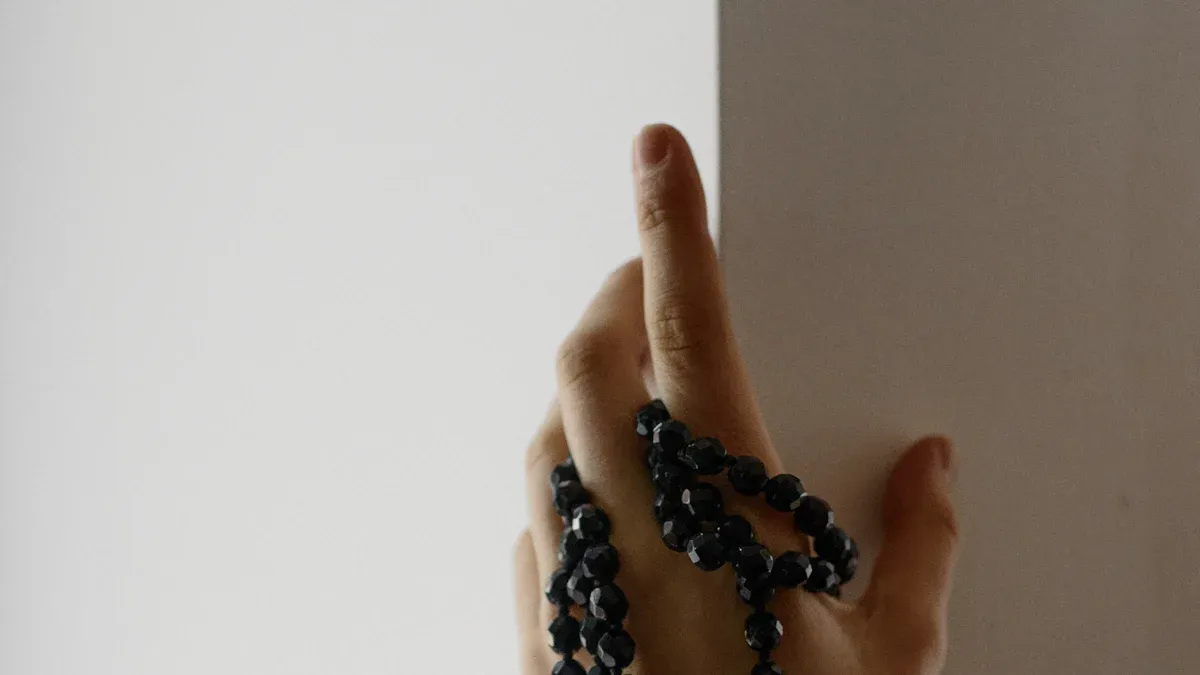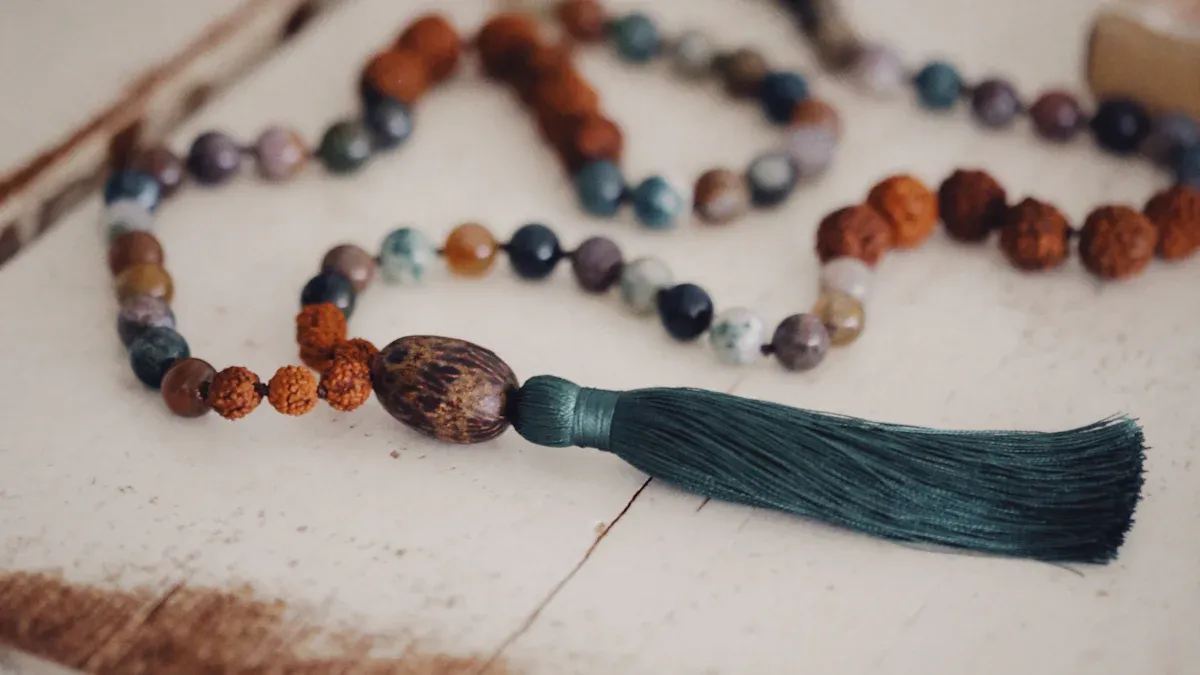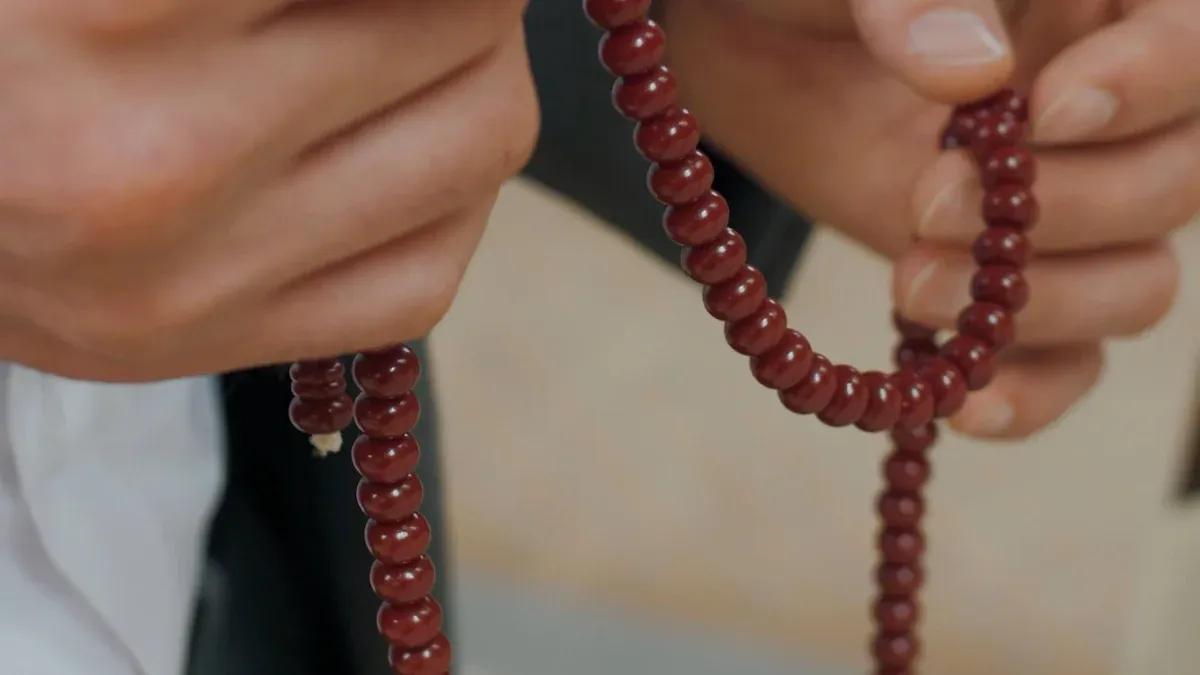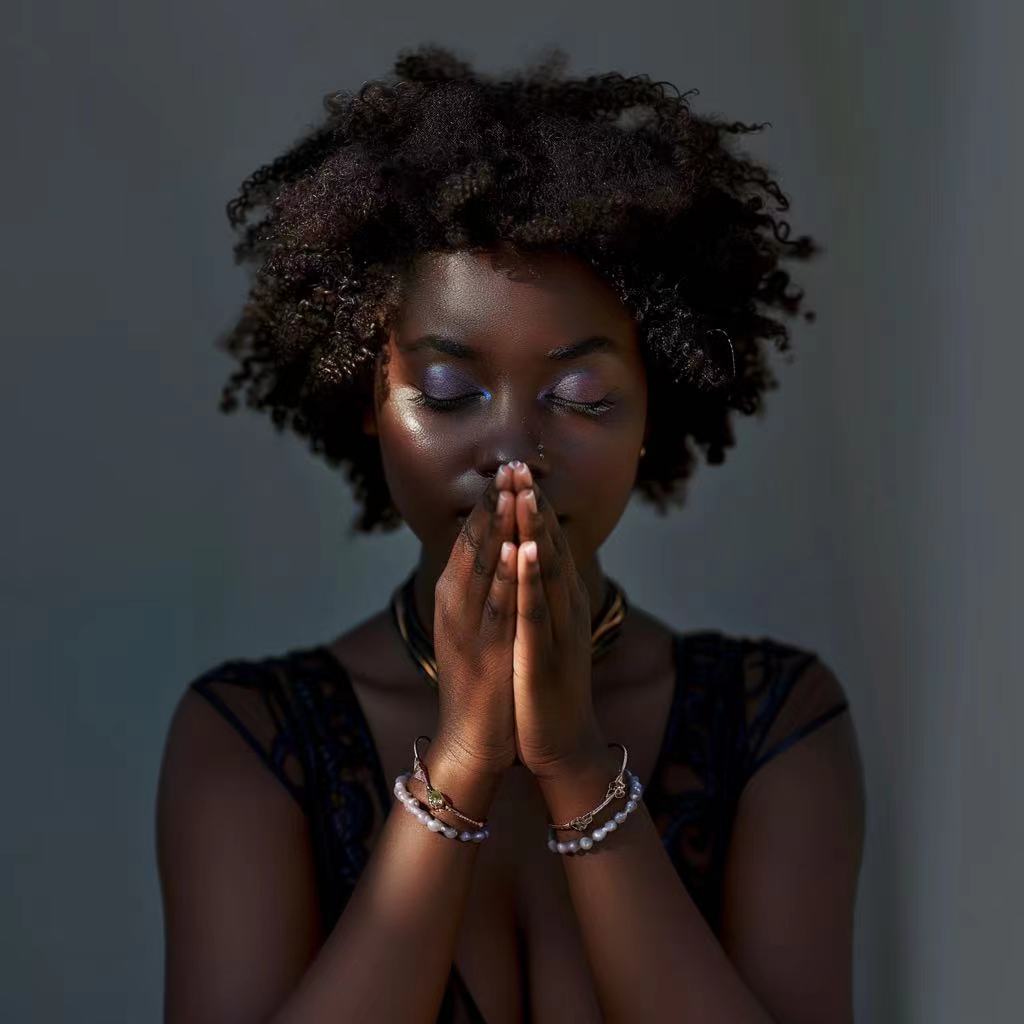
Are you thinking about starting a new spiritual or mindfulness habit? You are not the only one. Over 65 percent of people in the world use prayer beads, worry beads, or rosaries every day. In 2025, you can find Prayer Beads for Beginners almost anywhere. They are cheap, simple to use, and great for everyone. It does not matter where you come from. You only need to be curious. You do not need any experience!
Key Takeaways
Prayer beads are easy tools for mindfulness and spirituality. They help you pay attention and connect with your goals. Anyone can use them, even if you are new to this.
Picking the right prayer beads means thinking about style, material, and meaning. Choose beads that feel good and match your spiritual goals.
Using prayer beads is simple and relaxing. Find a quiet place, think about your goal, and move through the beads slowly. This helps you practice mindfulness.
What Are Prayer Beads?

Origins and Traditions
You might wonder where prayer beads come from. People have used them for thousands of years, all around the world. Early Christians in Egypt counted prayers with pebbles as early as A.D. 341. In India, people used bead strings to honor gods like Vishnu and Shiva even before that. Muslims began using prayer beads in the 9th century, while Christians in Europe started using them during the Middle Ages.
Here’s a quick look at how different cultures use prayer beads:
Culture/Religion |
Type of Prayer Beads |
Description |
|---|---|---|
Christianity |
Used for counting prayers, especially in Roman Catholicism. |
|
Eastern Orthodox |
Chotki/Komposkini |
Prayer rope for counting prayers. |
Buddhism |
Japamala |
Beads for counting mantras. |
Hinduism |
Japamala |
Used for prayers or mantras, often made from special seeds. |
Sikhism |
Jaap Sahib |
Used for reciting prayers. |
Islam |
Misbaha/Tasbih |
Used for reciting the names of Allah. |
Secular |
Komboloi |
Worry beads for calming and relaxation, not tied to religion. |
You can see that prayer beads appear in many traditions. Each group has its own style and meaning, but the idea is always to help you focus and connect.
Symbolism and Purpose
Prayer beads are more than just tools for counting. They help you create a rhythm in your prayers or meditations. Each bead marks a step in your spiritual journey. When you use them, you can feel more connected to your faith or your sense of peace.
People use prayer beads to stay focused, count prayers or mantras, and bring mindfulness into daily life. Many say that holding the beads helps them calm their minds and feel present. For Prayer Beads for Beginners, this simple act can make starting a spiritual practice much easier. You do not need to know any special prayers. Just moving from bead to bead can help you feel grounded and centered.
Types of Prayer Beads
Anglican Prayer Beads
You might notice Anglican prayer beads look simple but hold deep meaning. They have 33 beads, which stand for the years of Jesus’ life. The beads are arranged in four groups of seven, called “Weeks,” with four larger Cruciform beads and one Invitatory bead. The cross at the end reminds you of faith and hope.
Feature |
Description |
|---|---|
Structure |
Four groups of seven beads, four Cruciform beads, one Invitatory bead, cross |
Symbolism |
Creation, the week, and the Cross |
Usage |
Move bead by bead, say prayers, reflect, or sit in silence |
You can use these beads for any prayer or meditation. Many people start at the cross, pause at the Invitatory bead, and then move through each Week. This pattern helps you focus and feel calm.
Tip: The four Cruciform beads remind you of the four directions and the four virtues—faith, hope, love, and peace.
Tibetan Mala
Tibetan malas come from ancient traditions. They usually have 108 beads, a special “guru” bead, and sometimes a tassel. The number 108 is sacred in Buddhism and Hinduism. Each bead marks a mantra or breath.
The guru bead shows where to start and finish.
The tassel stands for enlightenment.
Malas can be made from wood, seeds, bone, or stones.
You use a mala by moving one bead at a time as you repeat a mantra. This helps you stay present and peaceful. Each bead is a step on your path to mindfulness.
Protestant and Other Styles
Protestant prayer beads look a bit different. They have four sets of seven beads, with special beads in between. You also find an invitational bead and a cross.
Feature |
Protestant Prayer Beads |
Catholic Rosary |
|---|---|---|
Structure |
Four sets of seven beads |
Five sets of ten beads |
Prayer Pattern |
Free-form, flexible |
Fixed prayers |
You can use these beads in any way that feels right. Some people pray for each day of the week. Others use them for quiet reflection. There are also secular beads, like worry beads, for calming your mind anywhere you go.
Prayer Beads for Beginners: Getting Started
Choosing Your First Set
Picking your first set of prayer beads can feel exciting. You want something that feels right in your hands and matches your style. When you look at different options, think about these points:
Style and Design: Choose a set that looks good to you. Some people like bright colors, while others prefer natural wood or stone. If you enjoy how your beads look, you will want to use them more often.
Material: Many beginners start with plastic beads. They are light, affordable, and come in many colors. Wood and gemstones also feel nice and have their own special meanings. Pick a material that feels comfortable and meaningful to you.
Size and Fit: Try holding the beads before you buy them. Make sure they fit well in your hand. If you want to wear them as a necklace or bracelet, check the length and how they feel on your skin.
Price and Quality: You do not need to spend a lot. Look for beads that are well-made and sturdy. A good set will last a long time, even if you use it every day.
Personal Meaning: Some people like to make their own prayer beads. This adds a special touch and helps you feel more connected to your practice.
Tip: Think about why you want to use prayer beads. Are you looking for calm, focus, or a way to pray? Your reason can help you pick the right set.
If you are just starting, simple designs work best. Many sets for Prayer Beads for Beginners use easy-to-hold beads and clear patterns. This makes it easier to learn and enjoy your new practice.
Understanding Bead Structure
Every set of prayer beads has its own structure, but most share some basic parts. Knowing these parts helps you use your beads with confidence.
String: This holds all the beads together. It should be strong but flexible, so the beads move smoothly.
Beads: These are the main part. You move from bead to bead as you pray or meditate. The number of beads can change based on the tradition.
Dividers: Some sets have special beads or markers that break the string into sections. These help you keep track of where you are.
Special Beads: Many sets have one or two beads that stand out. These are often called the invitatory bead or the theme bead.
The structure of prayer beads supports your practice in a big way. When you touch each bead, you give your mind something to focus on. This helps you stay present and keeps your thoughts from wandering. Moving through the beads one by one can make your prayers or meditations feel steady and calm.
Here is a simple table to show the common parts:
Part |
Purpose |
|---|---|
String |
Holds beads together |
Beads |
Count prayers or mantras |
Dividers |
Mark sections for easy tracking |
Special Beads |
Start, end, or highlight key moments |
Many Prayer Beads for Beginners sets use clear dividers and special beads. This makes it easier to learn the flow and stay focused.
The Invitatory and Theme Beads
You will notice that many prayer bead sets have one bead that stands out from the rest. This is often called the invitatory bead. Some sets also have a theme bead. These special beads play an important role in your practice.
The invitatory bead helps you begin. When you reach this bead, you pause and set your intention. You might take a deep breath, say a short prayer, or just focus your mind. This bead marks the start of your journey through the beads.
The theme bead can remind you of your main goal or prayer. Some people use it to focus on a special word, phrase, or feeling. When you touch this bead, you remember why you started.
Note: The invitatory bead is not just a marker. It helps you slow down and get ready. Many people find that starting with this bead makes their whole practice feel more peaceful.
Moving through the beads in order, starting with the invitatory bead, helps you stay on track. The physical act of touching each bead keeps your mind from drifting. This is why so many Prayer Beads for Beginners guides suggest starting with a clear structure. It makes the practice simple and meaningful, even if you are new.
How to Use Prayer Beads

Learning how to use prayer beads can feel simple and calming. You do not need to memorize long prayers or follow strict rules. You just need a quiet space, your beads, and a few minutes for yourself. Let’s walk through each step together.
Preparation and Centering
Before you begin, take a moment to get ready. This helps you clear your mind and set the mood for your practice.
Find a comfortable spot. Sit somewhere quiet where you will not be disturbed. You can sit on a chair, a cushion, or even the floor.
Relax your body. Let your shoulders drop. Rest your hands in your lap.
Take a few deep breaths. Breathe in slowly through your nose and out through your mouth. Let your thoughts settle.
Hold your prayer beads. Choose your preferred hand. Most people use their right hand, but you can use whichever feels best.
Hang the beads on your third finger. This is a common way to hold them, especially with mala beads.
Find the starting bead. This could be the cross, pendant, or guru bead. Pause here for a moment.
Studies show that even a short centering practice can lower stress and help you feel more present. When you take time to center yourself, you give your mind a break from worries about the past or future.
Moving Through the Beads
Now you are ready to begin your practice. You can use any prayer, intention, or phrase that feels right to you. Here is a simple step-by-step guide:
Choose your prayer or intention. This could be a favorite prayer, a word like “peace,” or a phrase such as “I am calm.”
Start at the cross or pendant. Hold it gently and say your opening prayer or set your intention.
Move to the invitatory or first bead. Pause here. Take a breath or repeat your prayer.
Continue bead by bead. With each bead, repeat your chosen prayer or phrase. Move at a steady pace. Do not rush.
Use the divider or special beads as markers. When you reach a larger or different bead, pause and reflect. You can say a special prayer or just breathe.
Circle the beads. Keep going until you return to the starting point. If you use a mala, do not cross over the guru bead. Instead, turn the beads around and go back the other way.
Stay mindful. Focus on the feel of each bead. Notice your breath. Let your mind rest on the words or feelings you choose.
Try these simple phrases if you are not sure what to say:
“May I be at peace.”
“Thank you for this moment.”
“Guide me today.”
“I am present.”
You can also use silent intentions or just focus on your breath. The most important thing is to move slowly and let each bead help you stay in the moment.
Step |
What to Do |
|---|---|
Start |
Hold the cross or pendant, set your intention |
Move bead by bead |
Repeat your prayer or phrase |
Pause at dividers |
Reflect or breathe deeply |
Complete the circle |
End at the starting bead |
Closing Your Practice
When you finish moving through the beads, take a moment to close your practice. This helps you carry the calm feeling with you.
Hold the cross, pendant, or guru bead. Pause and take a deep breath.
Say a closing prayer or word. You might say “Thank you,” “Amen,” or simply sit in silence for a few seconds.
Reflect on your experience. Notice how you feel. Are you calmer? More focused?
Put your beads away with care. Some people like to keep them in a special pouch or place.
You do not have to spend a long time. Even a few minutes can make a big difference. The key is to practice with patience and kindness toward yourself.
If you are new to Prayer Beads for Beginners, remember that every session is unique. Some days you may feel peaceful right away. Other days your mind may wander. That is okay. The more you practice, the easier it becomes to find your rhythm and enjoy the benefits.
Tips for a Meaningful Practice
Creating a Comfortable Space
You want your prayer bead practice to feel peaceful. Start by choosing a spot that feels safe and quiet. Many people use a white noise machine to block out distractions. Thick curtains or weatherstripping under doors can help keep outside sounds away. Keep your space neat and tidy. Clutter can make it hard to focus. Watch out for household noise, like family talking or electronic devices. You might want to turn off your phone or let others know you need a few minutes alone.
Tip: A simple, clean space helps your mind relax and makes your practice more enjoyable.
Personalizing Your Routine
Your prayer bead routine should fit your life and beliefs. You can make it special by customizing your beads. Try picking colors, shapes, or sizes that mean something to you. Some people add charms that remind them of personal experiences or cultural traditions. You can organize your beads around a theme, like peace or gratitude. Decide what prayers or intentions you want to focus on. Some beginners use their beads to pray the Psalms or think about specific people or issues.
Here’s a quick guide to personalizing your routine:
Choose your intent.
Pick a theme.
Select the strand shape.
Decide on bead shapes.
Choose a meaningful number of beads.
The tactile feel of beads helps you stay focused and grounded during prayer.
Overcoming Common Challenges
You might notice your mind wandering when you use prayer beads. This happens to everyone. Sometimes you feel unsure about using beads for prayer. Try creating a cycle or pattern that works for you. This structure helps you stay focused and makes your practice feel more natural. If you get distracted, pause and take a deep breath. Remember, it’s okay to start small and build your routine over time.
Stay patient with yourself. Every practice gets easier with time and care.
Next Steps
Learning More
You might feel curious about deepening your understanding of prayer beads. Many people find that reading stories or guides helps them connect more with their practice. You can explore books and resources that answer common questions and share personal experiences. For example, Kristen’s book on Prayer Beads gives clear answers about how to use them and what they mean. If you want to learn about different spiritual traditions, 'The Magical Use of Prayer Beads' by Jean-Louis de Biasi covers many paths and offers tips for both beginners and experienced users.
You can also check out guides from places like Bethany Calvary. These guides explain the Christian symbolism behind prayer beads and show you step-by-step how to pray with them. They talk about the history of prayer beads and how you can adapt them for your own spiritual journey.
Many people say that using prayer beads during a retreat or quiet time helps them feel more connected and focused.
Here are some ways to keep learning:
Read books that explore different traditions.
Look for online guides with simple instructions.
Try using prayer beads in new ways, like for mindfulness or gratitude.
Connecting with Others
You do not have to practice alone. Many people enjoy sharing their experiences with others. You can join a local group or an online community. These groups often welcome beginners and love to answer questions.
Ask friends or family if they use prayer beads.
Visit a local place of worship or meditation center.
Join online forums or social media groups about prayer beads.
Talking with others can help you stay motivated. You might learn new ways to use your beads or discover prayers that speak to you. Sharing your journey makes the practice even more meaningful.
Remember, everyone’s path is unique. You can find support and inspiration from people all over the world.
You can start your journey with prayer beads today. Every practice feels unique. Take time to reflect on your first tries and stay patient as you learn. Try new prayers or join a group. Many people feel calm and connected after regular practice. Let peace and focus grow in your life.
FAQ
How often should you use prayer beads?
You can use prayer beads daily or whenever you need calm. Some people like morning routines. Others prefer evenings. Find what works best for you.
Can you use prayer beads if you are not religious?
Absolutely! Many people use prayer beads for mindfulness, stress relief, or focus. You do not need to follow a religion to benefit.
What if you lose count or get distracted?
No worries! Just pause, take a breath, and start again. The beads help you refocus. Everyone gets distracted sometimes.
See Also
What is the Tao that can be told and what inspired the Tao Te Ching






